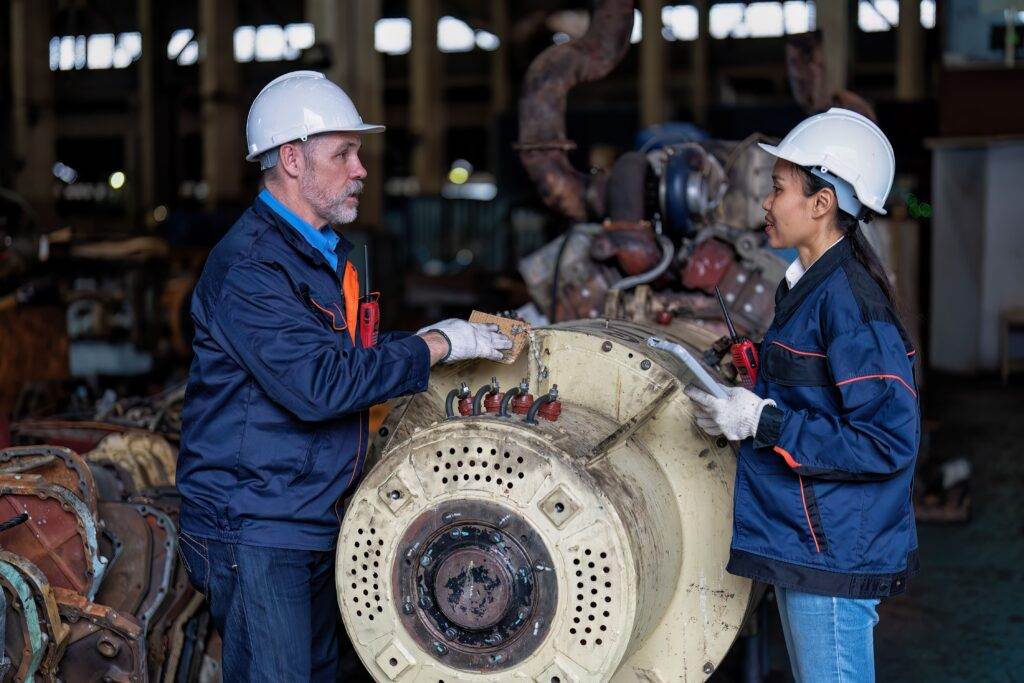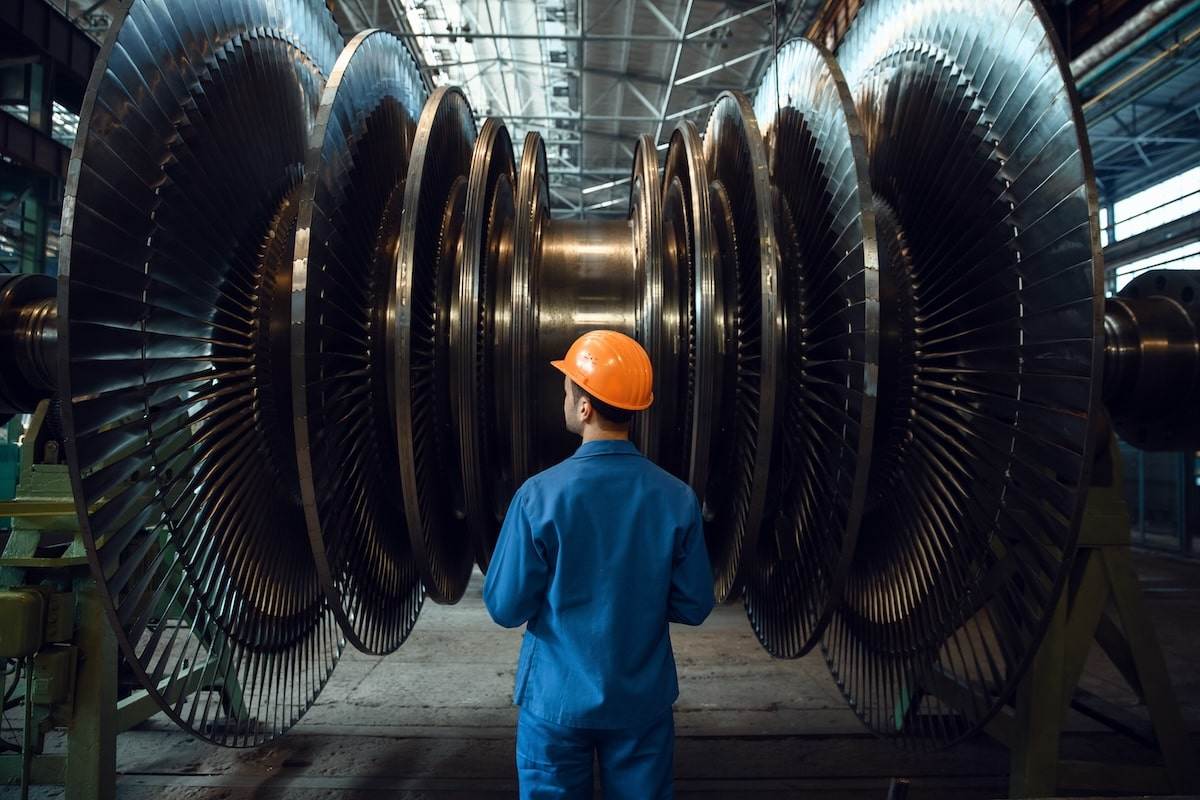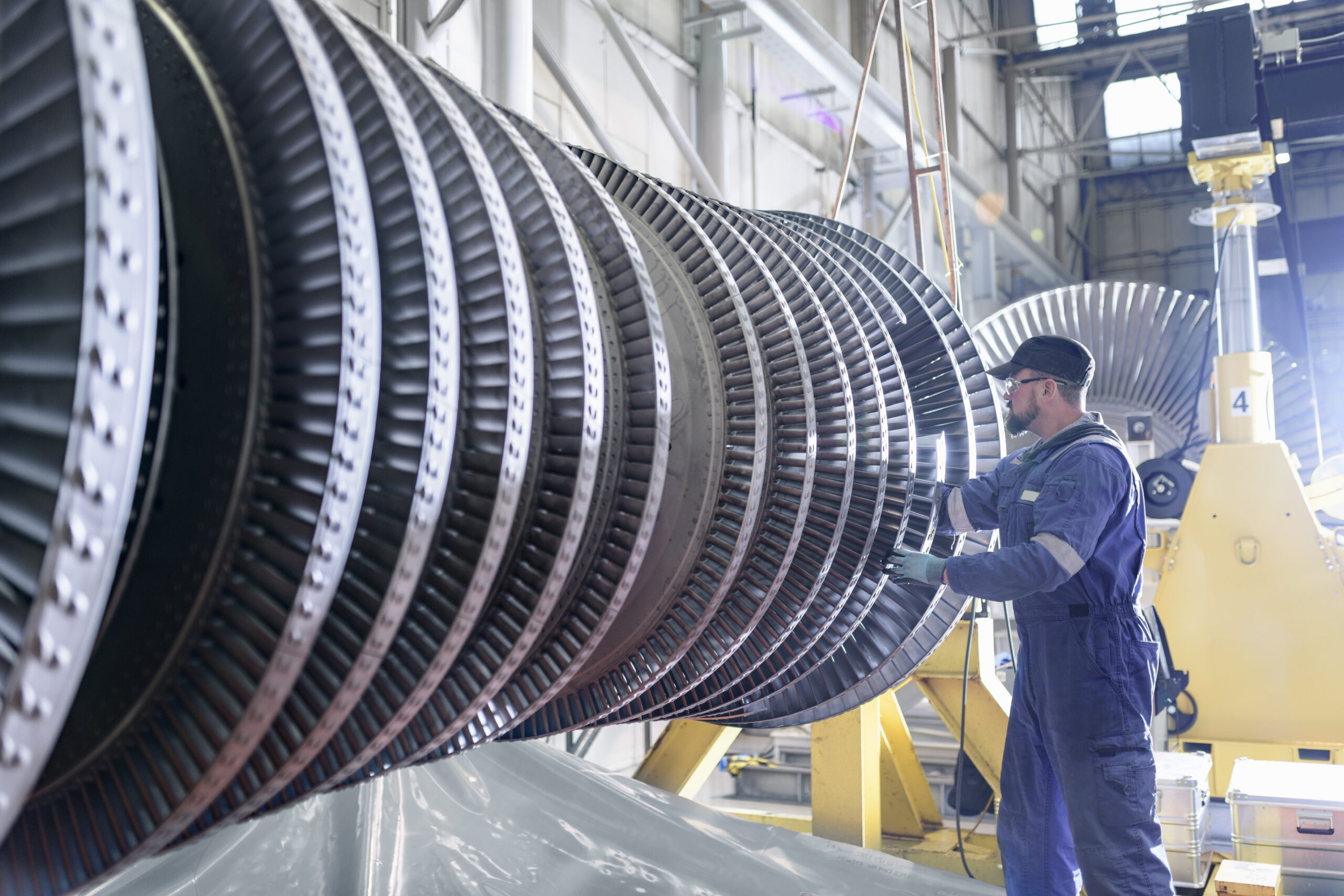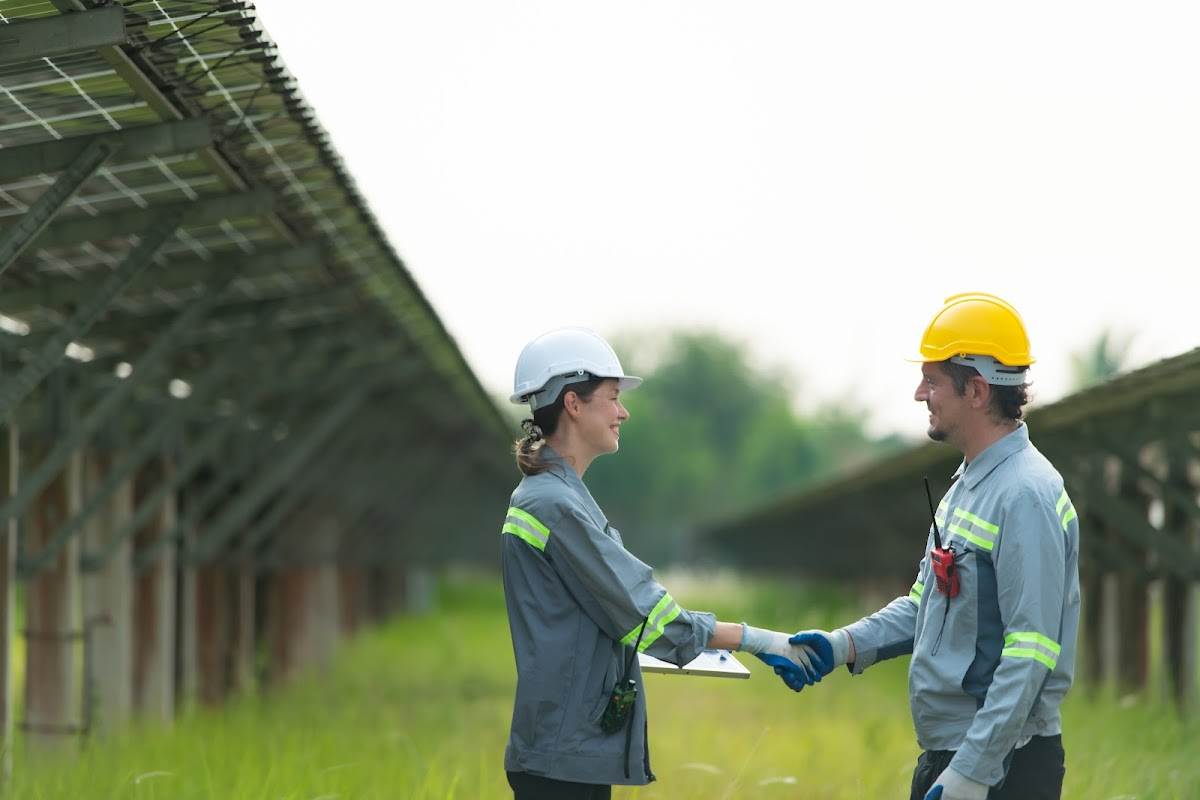Turbines are at the core of performance in power generation, aerospace, and various industrial applications. However, it’s not just the large components that matter. The smaller, often overlooked turbine control components play a crucial role in these systems’ efficiency, reliability, and overall success.
Turbines are marvels of engineering efficiency, whether propelling aircraft through the skies or generating electricity in power plants. While turbines’ massive blades and sleek designs often steal the spotlight, it’s the small, intricate control components that truly drive their performance.
Turbine control components are the lifeline of power generation. Without it, turbines would falter at startup, stumble in operation, and risk catastrophic failure. Understanding the critical role of turbine control is akin to mastering the conductor’s baton in an orchestra. It’s the difference between cacophony and symphony.
This blog explains the pivotal role of turbine control in optimizing power generation efficiency and reliability, laying the foundation for our exploration. Join us as we explore how these seemingly minor parts play a crucial role in maximizing efficiency, reliability, and safety.

Detailed Understanding Of Turbine Control
Turbine control involves a sophisticated system that regulates the operation of turbines, ensuring efficient energy production while maintaining safety and reliability.
Turbine control refers to the mechanisms and technologies that manage the operation of turbines, including steam and gas turbines. This includes the control of variables such as speed, temperature, and pressure, crucial in maximizing power output and efficiency.
The turbine control system orchestrates power generation, including valves, controllers, and sensors. It constantly adjusts parameters to match variations in demand, ensuring consistent and optimized performance. While both steam and gas turbine control systems share the objective of optimizing power production, they are tailored to the unique characteristics of their respective turbines. Gas turbine control focuses on fuel regulation and combustion optimization, whereas steam turbine control emphasizes managing steam flow and pressure for maximum efficiency.
Major Components Of Turbine Control: A Closer Look
When it comes to turbine control, every component plays a crucial role in ensuring peak performance. Let’s take a closer look at the major players in turbine control:
1. Control Valve: The control valve regulates the flow of steam or gas into the turbine, precisely controlling the speed and power output.
2. Generator: At the heart of turbine control, the generator converts mechanical energy from the turbine into electric power, ready for distribution.
3. Control Systems: These systems consist of various subsystems, including speed control, frequency control, and automatic turbine control, ensuring smooth operation and maximum efficiency.
4. Steam Turbine Control Valve: Crucial in steam power plants, these valves regulate steam flow to the turbine, maintaining optimal pressure and temperature for efficient power generation.
5. Excitation System: The excitation system maintains the generator’s magnetic field and ensures stable voltage output for the grid.
Turbine Control In Different Types Of Power Plants
Turbine control is the backbone of power generation across various types of plants, each with its unique requirements:
- Gas Turbine: In gas turbine power plants, turbine control systems manage fuel and airflow into the combustion chamber, precisely controlling the turbine’s speed and power output. This ensures efficient operation and reliability during startup and operation.
- Steam Power Plant: In steam power plants, turbine control systems regulate the flow of steam into the turbine, adjusting valve positions to control the turbine’s speed and power output. This ensures efficient and stable operation, optimizing power generation and maintaining system reliability.
- Combined Cycle Power Plant: In combined cycle power plants, turbine control systems coordinate the operation of both gas and steam turbines. The waste heat from the gas turbine is used to produce steam that drives the steam turbine, significantly enhancing overall efficiency and power output.
The Impact Of Turbine Control Components On Performance
Across gas, steam, and Combine Cycle plants, turbine control systems are essential for maximizing efficiency, reliability, and safety, making them indispensable components of modern power generation.
1 Reliability And Frequency Control In Turbine Operation
Reliability isn’t just a buzzword in turbine control. It’s the bedrock of efficient power generation. With turbines operating continuously, any downtime can lead to significant losses. That’s why reliability is paramount in turbine control systems, ensuring uninterrupted operation and maximum productivity.
But reliability isn’t the only factor at play. Frequency control is equally critical in turbine operations. Turbines must maintain a steady frequency to synchronize with the grid and deliver power efficiently. Frequency control systems monitor and adjust turbine speed in real-time, ensuring stability and grid compatibility.
Together, reliability and frequency control contribute to improved performance across the board. By minimizing downtime and maintaining grid stability, these aspects of turbine control maximize power output and profitability for power plants, whether they’re harnessing wind, gas, or steam power. Reliability and frequency control ensures seamless integration into the power grid and drives performance to new heights.

2 Improving Performance With Efficient Turbine Control
Efficiency is the name of the game when it comes to turbine control. By implementing strategic control strategies, operators can maximize turbine efficiency, driving performance and productivity to new heights. Whether it’s optimizing valve operation or fine-tuning controller settings, every aspect of turbine control plays a crucial role in enhancing overall energy production.
Precise control mechanisms, such as advanced control algorithms and feedback systems, enable turbines to operate at their optimal performance points, maximizing power output. Turbines can extract the maximum amount of energy from their respective sources by continuously adjusting parameters such as rotor speed, steam flow, and fuel consumption.
This optimization increases overall power generation capacity and ensures that turbines operate efficiently across a wide range of operating conditions, from low to peak demand.
Turbine systems can minimize energy losses throughout the power generation process through precise control of operating parameters. Turbines can minimize inefficiencies and waste associated with energy conversion by maintaining tight control over variables such as steam pressure, flow rates, and combustion efficiency.
This reduction in energy loss improves the turbine system’s overall efficiency and contributes to lower operational costs and reduced environmental impact.
3 Enhances operational flexibility
Influence on operational flexibility is a critical aspect of turbine control systems, allowing turbines to adapt to dynamic operating conditions and environmental factors.
1. Adaptability To Varying Load Demands: Turbine control systems enable turbines to respond quickly and effectively to fluctuations in load demand, ensuring optimal performance under varying conditions. By adjusting parameters such as rotor speed, fuel flow, and power output in real-time, turbines can match their energy output to the changing demands of the grid.
This adaptability maximizes power generation efficiency and enhances grid stability by providing a reliable and responsive energy supply. Whether experiencing sudden spikes or drops in demand, turbines equipped with advanced control systems can seamlessly adjust their operations to meet the grid’s needs, contributing to a more stable and resilient energy infrastructure.
2. Response To Environmental Conditions: Turbine control systems play a crucial role in responding to environmental conditions such as temperature and grid frequency. Advanced control algorithms optimize the operational parameters of the turbine to maximize energy capture while minimizing loads on turbine components.
Similarly, control systems in gas turbine power plants adjust combustion parameters and operating setpoints to maintain emissions compliance and ensure efficient operation under varying ambient conditions. Turbine control systems help maximize energy efficiency and minimize environmental impact by continuously monitoring and adapting to environmental factors, supporting the transition to cleaner and more sustainable energy sources.
The AP4 Group Advantage
The AP4 Group offers a full-service package for heavy-duty and aero-derivative industrial gas turbine maintenance. Their approach to turbine parts, including control components, showcases their dedication to quality and customer satisfaction:
Extensive Inventory and Rapid Delivery
With an extensive inventory of heavy-duty gas turbine parts and aero-derivative parts for systems like GE, Siemens, Pratt & Whitney, and others, AP4 ensures that the parts you need are always available. Their industry-leading turbine parts inventory and fast, reliable delivery system significantly reduce downtime, keeping your operations running smoothly.
A Focus on Quality and Authenticity
As an authorized distributor of genuine OEM parts, AP4 ensures that you receive components of the highest quality — parts that are designed to meet the rigorous standards of your specific turbine model. This commitment to quality helps extend the lifespan of your equipment and ensures that your turbine performs as expected, without unexpected failures.
Worldwide Support
AP4’s global network allows them to meet the demands of customers from every corner of the world. Our dedicated customer support managers are committed to providing the best service and support, ensuring that you have access to the parts and expertise you need, no matter where you are.
Adding Value Beyond Parts
Beyond just supplying parts, AP4’s comprehensive approach to turbine maintenance includes repair and overhaul services, cybersecurity for connected turbine control systems, and even fully stocked consumables kits for planned or unplanned outages. This holistic approach ensures that you’re not just buying parts — you’re investing in a partnership that adds value to your operations.
In conclusion, Small parts like turbine control components may not seem significant at first glance, but their impact on turbine performance cannot be overstated. They are crucial for optimizing operations, ensuring reliability, and reducing operational costs. AP4’s extensive inventory, commitment to quality, and global support network make them a leading choice for turbine maintenance needs.
As turbines continue to play a critical role in various industries, understanding the importance of control components and choosing the right maintenance partner will be pivotal. The AP4 Group exemplifies how comprehensive service and a focus on small parts can lead to big gains in turbine performance and customer satisfaction.




